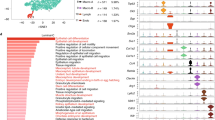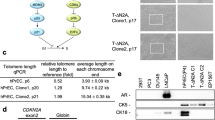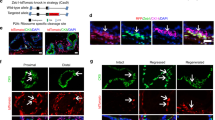Abstract
Normal prostate epithelial cells are difficult to propagate in vitro without experimental immortalization. The goal of this study was to isolate and characterize a propagable epithelial cell line from normal adult rat prostate. Enrichment of proliferation‐competent cells was accomplished in vivo by initiating a single cycle of prostatic involution/regeneration. The RPE‐F344 cell line was established from an androgen‐deprived, involuted prostate four days after the initiation of regeneration by administration of testosterone. The cell line has been cultured in vitro for >50 passages, forms a uniform monolayer in culture, exhibits contact inhibition at confluence, and does not form colonies in soft agar. Immunocytochemical and RT‐PCR analyses demonstrated that the RPE‐F344 cells express anti‐apoptotic genes associated with cell survival, and several growth factor receptors important in prostate development and homeostasis. RPE‐F344 cells are p27kip1 negative, telomerase positive, and express high molecular weight cytokeratins specific for prostatic basal cells. They also express low levels of androgen receptor (AR) and prostatic acid phosphatase (PAP); features associated with secretory luminal epithelial cells. RPE‐F344 cells are maintained in vitro without androgen supplementation, but addition of 15nM dihydrotesterone (DHT) to the culture media results in a significant but transient enhancement of cellular proliferation. Establishment of RPE‐F344‐like colonies from rat prostate is limited to the ventral and dorsal lobes of the prostate 2–4 days after initiation of regeneration, suggesting that RPE‐F344 cells may originate from a stem cell‐like compartment that is responsible for regenerative repopulation.
This is a preview of subscription content, access via your institution
Access options
Subscribe to this journal
Receive 4 print issues and online access
$259.00 per year
only $64.75 per issue
Buy this article
- Purchase on Springer Link
- Instant access to full article PDF
Prices may be subject to local taxes which are calculated during checkout
Similar content being viewed by others
Author information
Authors and Affiliations
Corresponding author
Rights and permissions
About this article
Cite this article
Presnell, S., Glover, W., Borchert, K. et al. Isolation and partial characterization of an epithelial cell line (RPE‐F344) from the regenerating prostate of a normal adult male rat. Prostate Cancer Prostatic Dis 2, 257–263 (1999). https://doi.org/10.1038/sj.pcan.4500363
Received:
Revised:
Accepted:
Published:
Issue Date:
DOI: https://doi.org/10.1038/sj.pcan.4500363



